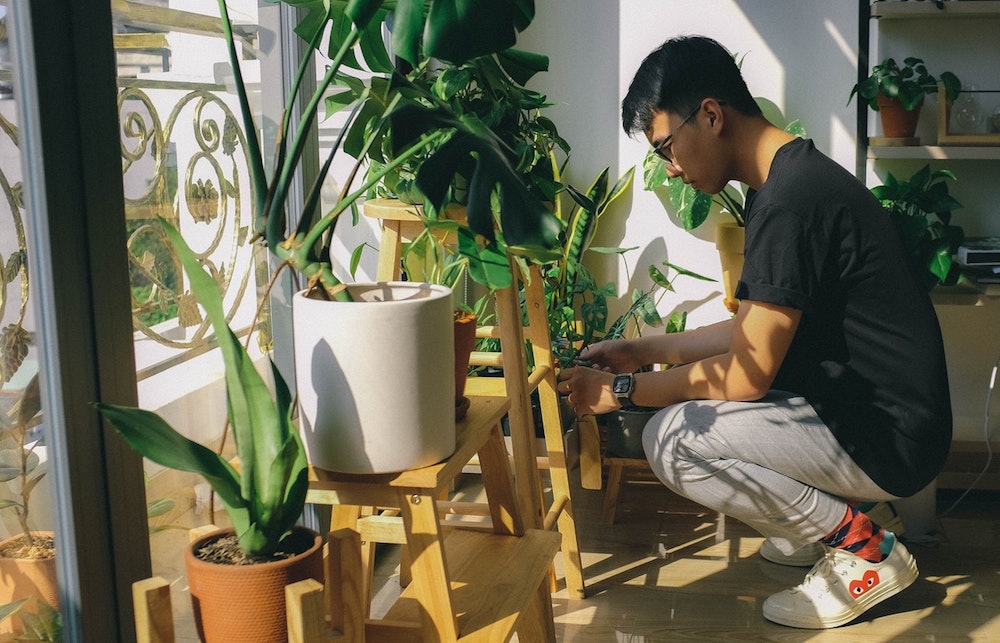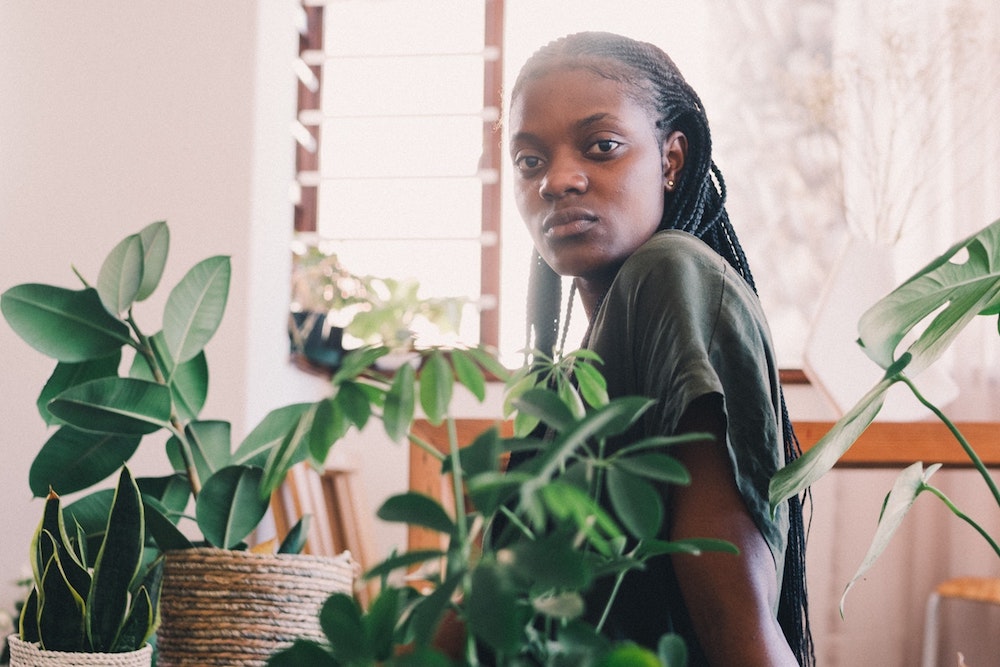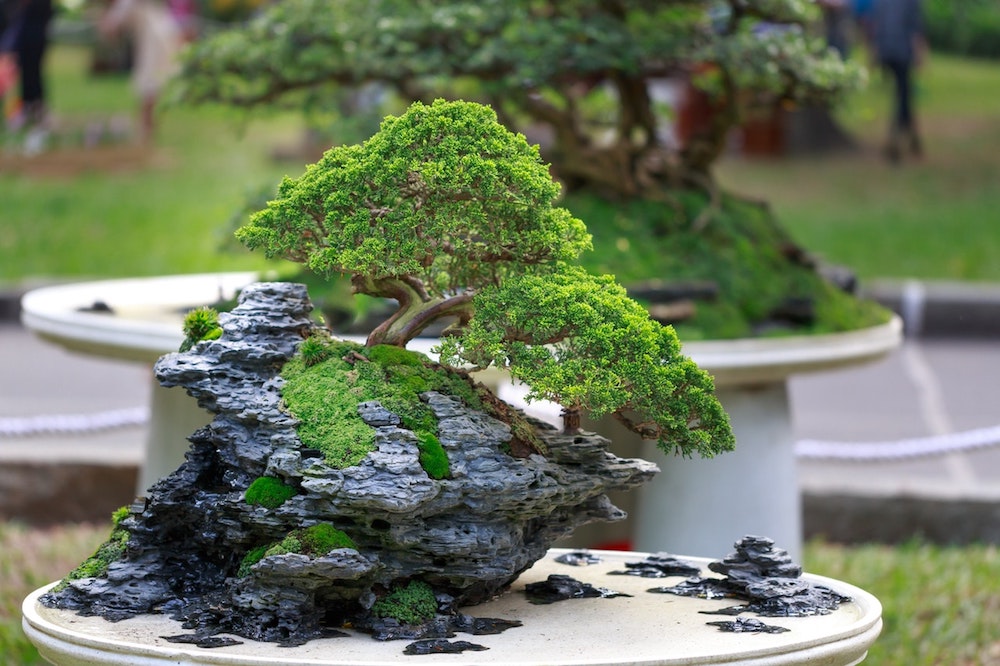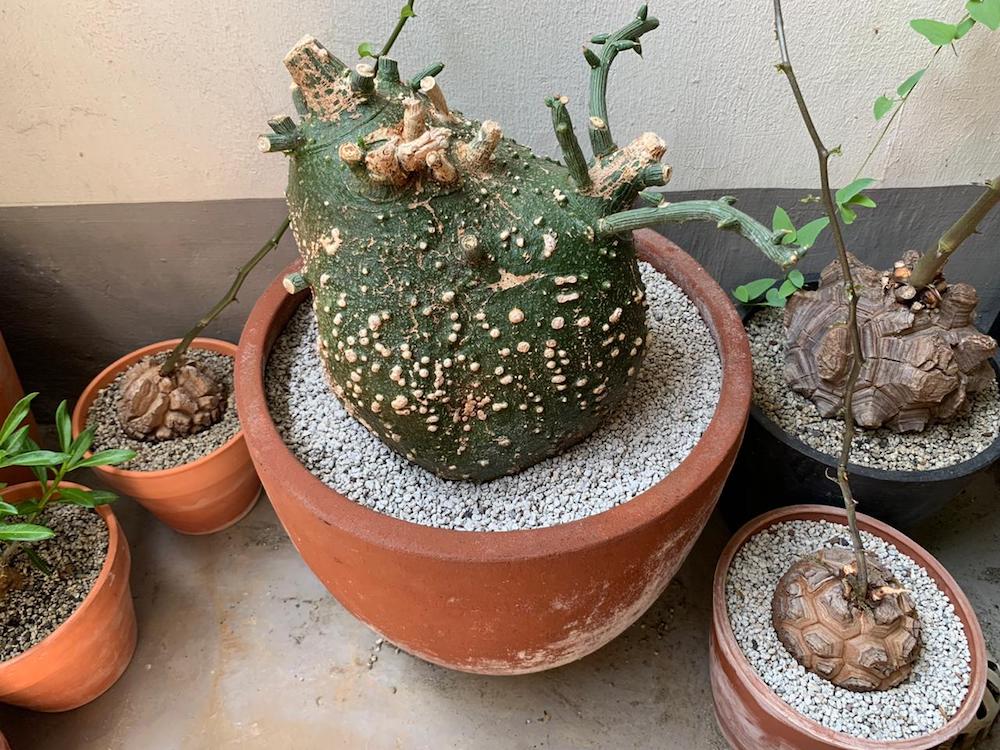How COVID-19 Is Changing People’s Relationships With Houseplants
“Since when did people start naming plants?” my mother asked me. We were at the dining room table, scrolling through pictures of plants on my iPhone. The photos—close-ups of all kinds of houseplants—had been posted on Instagram by “proud plant parents.”
One plant, for example, was named Lazarus because he (the poster’s choice of pronoun) “rose from the dead,” like the Biblical figure. A pair of cacti, potted together, were named Sarawat and Tine after the lead characters of a Thai TV series. A septet of caudiciform plants, known for their bulbous aboveground roots, were called BTS after the sensationally popular boy band from South Korea. Others were named after popular fictional characters—Bulbasaur, Gandalf, Yoda.
My mother’s puzzlement is understandable. After all, she has been tending orchids, succulents, and bonsai trees since before I was born. She has also heard stories of people talking to their plants and of plants getting “mad” after being transferred away from family and friends. But it had never occurred to her or her peers to give names to plants. Even the ficus that has accompanied her to four different residences over almost four decades, who started out as a bonsai and now stands about a meter tall in her backyard, remains unnamed.
A year ago, I would have felt a similar puzzlement. But not anymore—not during a pandemic that has spurred a “botanic boom” all over the world, one that has led people from Singapore to London to buy, collect, and nurture plants in their condominium units and apartments. In my home country of the Philippines, ornamental plant sales are among the few thriving industries, and roadside plant stores have even caused traffic jams. An overgrowth of plant photos, like the ones I showed my mother, can be seen all over social media, shared by users of different ages, genders, and geographic and socioeconomic backgrounds.
Recently, I’ve started researching whether there has been a shift since the start of the pandemic in how people in the Philippines are engaging with indoor plants.
The more I learn about the growing popularity of parenting houseplants, the more convinced I am that something mysterious is going on.
As an anthropologist, I’m deeply interested in the act of naming. That’s because, as the anthropologist Susan Benson noted, “Naming [is] a quintessentially social act.” Humans only give names to people and things that matter to them.
To name plants is to strengthen an attachment to them. As indoor gardening expert Hilton Carter explains: “I tell people all the time that the process of naming plants is based on the idea of creating a bond with their plant. It’s harder to dispose of a plant if you give it a name. It forces you to care for it much better.”
Still, some plant owners bristle at the idea of naming. “Naming plants is very extra,” my cousin Al, a software engineer who lives alone in an apartment in Sydney, told me. But he does call himself a “plant parent,” a term that, while used with levity, nonetheless conveys a kind of kinship with one’s plants. In the Philippines, the recently coined terms plantito and plantita combine the words for uncle (tito) and aunt (tita) with plant—conveying another kind of familial bond.
Yet the decision not to name something also speaks to this power. My research assistant, Jhaki Mendoza, who is studying plant parenthood in Manila with me, shared the story of someone who refused to name his plants, lest “he develop an attachment to them,” as she put it. (Interestingly, some societies, especially those with high infant mortality rates, do not regard a baby a person until they receive a name.)
Even plant parents who do not give names to their plants often ascribe emotional states to them: happiness, sadness, anger, fatigue. Such personalization suggests that caring for plants is, at least for some people, much more than a hobby. For these people, plants are not just decorative items to collect and share photos of on Instagram. Nor are they merely stress relievers or slices of “nature.” Instead, these plants are individuals with distinct identities and personalities.
Keeping plants is nothing new, but the profound attachments that people have forged with specific plants vary a lot across time and place.
For instance, in her research in Mozambique, the anthropologist Julie Soleil Archambault found that men describe their relationships with certain plants in terms of “falling in love.” Anthropologist Fabiana Maizza documents how, among the Jarawara people in Brazil, garden plants are considered children.
In many ancient civilizations, the practice of maintaining plants as an end in itself—and not to produce food or medicine—started with elites who had access to land, labor, and water. Plant ownership often signified wealth and power, and invading armies would even take botanical wonders as part of their conquests. This practice led Roman author Pliny the Elder to remark in the first century that “even trees have figured among the captives in our triumphal processions.”
For my mother, tending to plants is tied to the 3,000-year-old tradition of cultivating miniature landscapes, known as penjing in China, which later traveled to Japan to become bonsai. Starting in the 17th century, knowledge about bonsai spread even more as explorers, missionaries, and traders exchanged botanical information. In a chronicle published in 1604, a Spanish observer described with amazement how the Chinese settlers in Manila grew trees “so small that both the tree and stone can be held in the hand.”
Through encounters between colonial powers and the regions they dominated, human relationships with plants became even more complicated. Oceanic voyages brought all kinds of plants from the colonies to metropolitan centers and back again: bougainvilleas were taken from Brazil, fiddle-leaf figs from West Africa, monsteras from Central America, staghorn ferns from Australia, and alocasia from the Philippines, to name a few.
Fast forward to the present hyper-connected age, and these exchanges of plants from far-flung places have become commonplace, raising questions about the ecological impacts of indoor gardening and its effects on people’s attitudes toward the environment. Over the past several centuries, plants from the tropics have taken root all over the world—finding their way to English townhouses, Mediterranean villas, American condominiums, Balinese resorts, and beyond. Ironically, through historic colonial encounters, their original habitats were often decimated, though some of these horticultural exiles are still alive.
One of my interlocutors, who asked not to be named, based in Manila told me that during this time of COVID-19, he has found ways of importing plants from overseas through couriers, circumventing plant quarantine rules.
“Isn’t it ironic?” he said. “Plants are able to travel much more freely than humans in the time of the pandemic.”
My own horticultural interests—or rather, my interest in people who love plants—led me to recently acquire my own houseplants. I started with a dracaena, a 3-foot-tall slender shrub, in my bedroom, then added a bird’s nest fern to my office.
My mother approved of both choices, but she was dismissive of my attempt to buy a caudiciform, saying that it “looked like a potato.” Many plant parents I know would sharply disagree, valuing diverse forms over more conventional ideas of beauty, like the ability to produce flowers.
I’m still learning how to be a good plant parent. Part of it, I’ve discovered, is paying close attention to minor changes in my “children.” When I shared a picture of my bird’s nest fern with a friend who has developed what she describes as an “obsession” with plants since the start of the pandemic, she exclaimed, “Oh, there’s a new growth!” I hadn’t even noticed the emerging leaves, but her eyes were already attuned to such changes.
At a time when plants are valued as individuals and are seen as ends in themselves rather than as a means to bear fruits or flowers, it seems that leaves are the new blooms.
If the pandemic is a moment when a greater number of humans are forced to reckon with a world shared with other life forms, then these newfound intimacies with plants should come as welcome growth.
While the omnipresence of viruses points to the precariousness of all life on Earth, keeping plants as companions also expands that vision of life, reminding humans that we are not the only beings with the right to exist and thrive. Against the threat of disease and endangerment, plants, in their diversity and beauty, offer the promise of regeneration and even kinship.
But is this mode of engagement really new? Or is it a throwback to—or a continuation of—the ways that people all over the planet, across different biomes, have long accorded personhood to trees and other nonhuman participants in our worlds?
Anthropologists, who specialize in the study of humans, have in recent years called for an “anthropology beyond the human,” one that takes these entanglements with other life forms seriously. As these multispecies ethnographers have pointed out, many societies have long regarded plants as having “distinctive characteristics that make them selves.”
What has changed, perhaps, is that plants are increasingly indoors, participating in symbiotic relationships based on the “nature” they bring and the “nurture” they exchange with their human companions.
I do not know where these tendrils will lead or what new ideas will take root. What is clear is that human-plant entanglements in a time of a pandemic cannot be characterized as a singular phenomenon with one elegant explanation. Just like plants themselves, people’s motivations for caring for plants are variegated.
Perhaps some people will abandon their plants once they can travel again. But others, I expect, will value their plants even more, with the recognition that they lived through the pandemic together—an affection that will hopefully extend to the imperiled natural world at large.
In a reminder that these entanglements are constantly evolving, my mother came up to me the other day carrying a plant in a pot.
“This is Pitta,” she said. “I have started naming my plants too.”





































